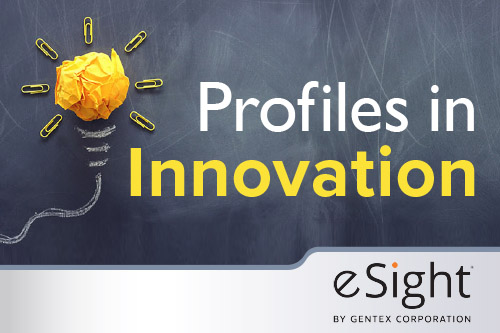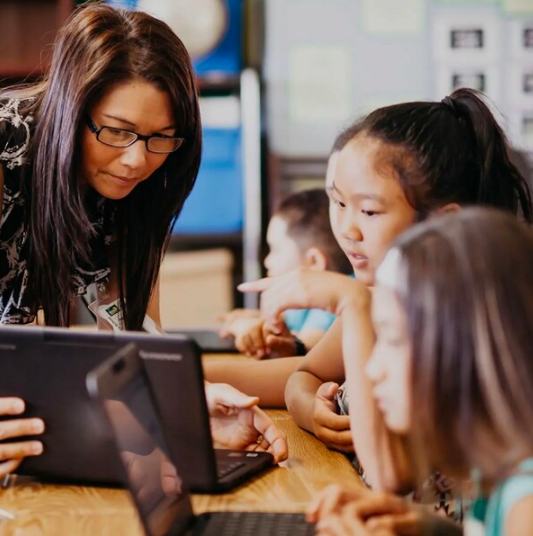Key points:
By now, it’s no secret that phones are a problem in classrooms. A growing body of research and an even louder chorus of educators point to the same conclusion: students are distracted, they’re disengaged, and their learning is suffering. What’s less clear is how to solve this issue.
Of late, school districts across the country are drawing firmer lines. From Portland, Maine to Conroe, Texas and Springdale, Arkansas, administrators are implementing “bell-to-bell” phone bans, prohibiting access from the first bell to the last. Many are turning to physical tools like pouches and smart lockers, which lock away devices for the duration of the day, to enforce these rules. The logic is straightforward: take the phones away, and you eliminate the distraction.
In many ways, it works. Schools report fewer behavioral issues, more focused classrooms, and an overall sense of calm returning to hallways once buzzing with digital noise. But as these policies scale, the limitations are becoming more apparent.
But students, as always, find ways around the rules. They’ll bring second phones to school or slip their device in undetected–and more. Teachers, already stretched thin, are now tasked with enforcement, turning minor infractions into disciplinary incidents.
Some parents and students are also pushing back, arguing that all-day bans are too rigid, especially when phones serve as lifelines for communication, medical needs, or even digital learning. In Middletown, Connecticut, students reportedly became emotional just days after a new ban took effect, citing the abrupt change in routine and lack of trust.
The bigger question is this: Are we trying to eliminate phones, or are we trying to teach responsible use?
That distinction matters. While it’s clear that phone misuse is widespread and the intent behind bans is to restore focus and reduce anxiety, blanket prohibitions risk sending the wrong message. Instead of fostering digital maturity, they can suggest that young people are incapable of self-regulation. And in doing so, they may sidestep an important opportunity: using school as a place to practice responsible tech habits, not just prohibit them.
This is especially critical given the scope of the problem. A recent study by Fluid Focus found that students spend five to six hours a day on their phones during school hours. Two-thirds said it had a negative impact on their academic performance. According to the National Center for Education Statistics, 77 percent of school leaders believe phones hurt learning. The data is hard to ignore.
But managing distraction isn’t just about removal. It’s also about design. Schools that treat device policy as an infrastructure issue, rather than a disciplinary one, are beginning to implement more structured approaches.
Some are turning to smart locker systems that provide centralized, secure phone storage while offering greater flexibility: configurable access windows, charging capabilities, and even low admin options to help keep teachers teaching. These systems don’t “solve” the phone problem, but they do help schools move beyond the extremes of all-or-nothing.
And let’s not forget equity. Not all students come to school with the same tech, support systems, or charging access. A punitive model that assumes all students have smartphones (or can afford to lose access to them) risks deepening existing divides. Structured storage systems can help level the playing field, offering secure and consistent access to tech tools without relying on personal privilege or penalizing students for systemic gaps.
That said, infrastructure alone isn’t the answer. Any solution needs to be accompanied by clear communication, transparent expectations, and intentional alignment with school culture. Schools must engage students, parents, and teachers in conversations about what responsible phone use actually looks like and must be willing to revise policies based on feedback. Too often, well-meaning bans are rolled out with minimal explanation, creating confusion and resistance that undermine their effectiveness.
Nor should we idealize “focus” as the only metric of success. Mental health, autonomy, connection, and trust all play a role in creating school environments where students thrive. If students feel overly surveilled or infantilized, they’re unlikely to engage meaningfully with the values behind the policy. The goal should not be control for its own sake, it should be cultivating habits that carry into life beyond the classroom.
The ubiquity of smartphones is undeniable. While phones are here to stay, the classroom represents one of the few environments where young people can learn how to use them wisely, or not at all. That makes schools not just sites of instruction, but laboratories for digital maturity.
The danger isn’t that we’ll do too little. It’s that we’ll settle for solutions that are too simplistic or too focused on optics, instead of focusing not on outcomes.
We need more than bans. We need balance. That means moving past reactionary policies and toward systems that respect both the realities of modern life and the capacity of young people to grow. It means crafting strategies that support teachers without overburdening them, that protect focus without sacrificing fairness, and that reflect not just what we’re trying to prevent, but what we hope to build.
The real goal shouldn’t be to simply get phones out of kids’ hands. It should be to help them learn when to put them down on their own.
Emily Smith, HonestWaves
Emily Smith is the founder of HonestWaves, a California-based company that designs and suppliesphone charging solutions, including smart lockers and charging stations, for businesses and public spaces.
Latest posts by eSchool Media Contributors
(see all)














